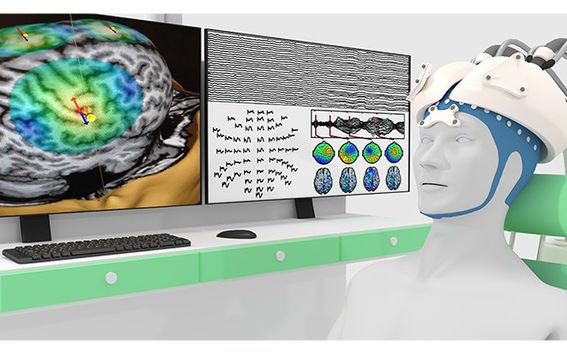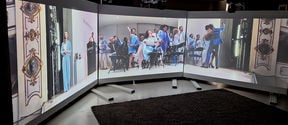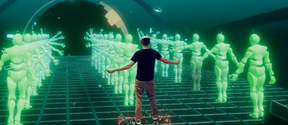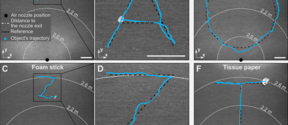One million euro for research on electromagnetic brain stimulation

The new project will involve Aalto University and the University of Eastern Finland working together to develop electromagnetic brain stimulation methods and the recording of brain activity that results from the stimulation.
The goal of Aalto University researchers is to produce a new kind of multi-channel transcranial magnetic stimulator, mTMS. Multi-channel transcranial magnetic stimulation is a method used to stimulate small regions of the brain. Using the stimulator, brain-activating pulses are directed electronically to their target areas based on simultaneously measured responses from the brain or muscles. Instead of using human judgement, the decision on the target, timing and strength of the next electromagnetic pulse is calculated using computer algorithms. In addition to enabling quick and feedback-dependent stimulation series that activate multiple brain regions, this method also allows the pulses to be coupled with the natural brain rhythms.
‘Controlled activation of entire neural networks improves the prospects of developing therapies for treating conditions such as stroke, chronic pain or depression,’ says Professor Risto Ilmoniemi while speaking of the opportunities presented by the project.
Potential benefits: Parkinson’s disease and chronic pain
In the A.I. Virtanen Institute at University of Eastern Finland, Professor Olli Gröhn’s research group is developing methods for measuring stimulation-induced activation using functional magnetic resonance imaging. In addition, multi-channel electric stimulation allowing electronic control of orientation of electrical fields is being developed. This will enable in the future better target selection for brain stimulation. The potential benefits include increased efficacy, and reduced side effects, of deep brain stimulation treatments of conditions such as Parkinson’s disease and chronic pain. The project is performed in collaboration with Associate Professor Shalom Michaeli from University of Minnesota.
In Otaniemi, new magnetic stimulators will be constructed to be used in a human 3-tesla magnetic resonance imaging (MRI) scanner, and in a small-animal 9.4-tesla MRI device at the University of Eastern Finland.
At Aalto University, the technical groundwork for the project has been carried out by Risto Ilmoniemi, Academy Research Fellow Jaakko Nieminen, postgraduate students Lari Koponen, Tuomas Mutanen and Aino Tervo, University Lecturer Matti Stenroos and Erasmus Visiting Doctoral Candidate Victor Hugo Souza from Brazil. In addition, National Taiwan University Professor Fa-Hsuan Lin, a long-term partner of the Department of Neuroscience and Biomedical Engineering and a former visiting FiDiPro fellow, provides MRI expertise for the project.
The name of the grant-winning project is ‘a new era in brain stimulation: development of next-generation EEG/fMRI compatible multi-channel brain stimulation technology.’ The size of the grant is 1 085 000 €, of which Aalto University will receive 643 000 € and the University of Eastern Finland will receive 442 000 €.
Further information:
Risto Ilmoniemi
Professor
Aalto University
[email protected]
tel. +358 50 556 2964
Olli Gröhn
Professor
A.I. Virtanen Institute
University of Eastern Finland
[email protected]
tel. +358 50 359 0963
- Published:
- Updated:
Read more news

Just believing that an AI is helping boosts your performance
People perform better if they think they have an AI assistant – even when they’ve been told it’s unreliable and won’t help them
Open demo-day in DAVE of Aalto Behavioral Laboratory
Open house event for Dynamic Audio Visual Environment of Aalto Behavioral Laboratory on 7th of May 2024, 13:00-16:00
Researchers develop a new way to instruct dance in Virtual Reality
The researchers started by experimenting with visualisation techniques familiar from previous dance games. But after several prototypes and stages, they decided to try out the audience wave, familiar from sporting events, to guide the dance.